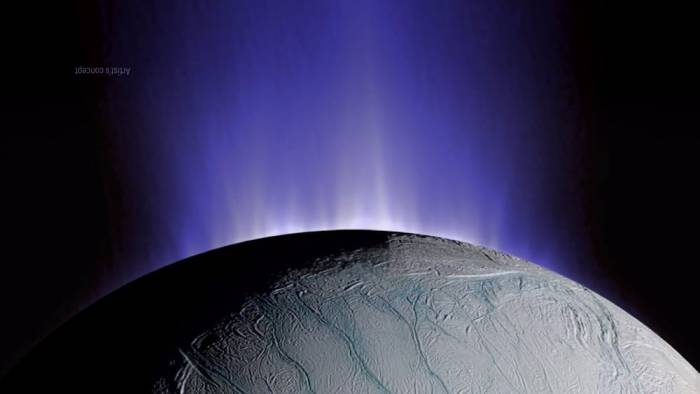The alien seawater which shoots from the moon’s geysers was known to contain a range of interesting ingredients including salt, silica and simple carbon compounds. However, the latest research has revealed that large, carbon-rich molecules are also blasted out from cracks in the moon’s icy surface, indicating that all the ingredients needed for life are present.
The researchers released a statement saying they are “blown away” by the findings. “With complex organic molecules emanating from its liquid water ocean, this moon is the only body besides Earth known to simultaneously satisfy all of the basic requirements for life as we know it,” the paper’s co-author Dr Christopher Glein said.
The discovery is the result of years of investigating data gathered by NASA's Cassini spacecraft as it flew close by Saturn’s moons. After a mission lasting nearly 20 years, Cassini retired last year when NASA operators deliberately plunged it into Saturn.
Enceladus, which was discovered in 1789, is located 1.27 billion miles away from Earth. The moon is about 500km (310 miles) in diameter and it has a surface temperature below -200 Celsius. Much of the knowledge about the moon has been gleaned from the highly-detailed photographs snapped by Cassini during its fly-bys.
During a close flyby in October 2015 one of Cassini’s instruments detected molecular hydrogen as the spacecraft flew through the moon’s plume. The hydrogen is believed to be the result of a geochemical interaction between water and rocks in the cracks on the surface.
“Even after its end, the Cassini spacecraft continues to teach us about the potential of Enceladus to advance the field of astrobiology in an ocean world,” Glein said.
The paper’s findings also have a huge influence on the next generation of space exploration. “A future spacecraft could fly through the plume of Enceladus, and analyze those complex organic molecules using a high-resolution mass spectrometer to help us determine how they were made,” Glein explained.
“We must be cautious, but it is exciting to ponder that this finding indicates that the biological synthesis of organic molecules on Enceladus is possible.”
The paper was published in the latest issue of Nature.
RT
More about: Saturn















































